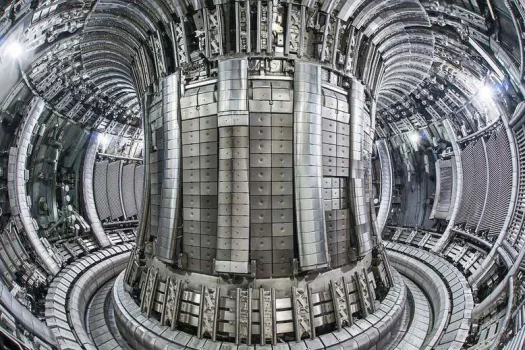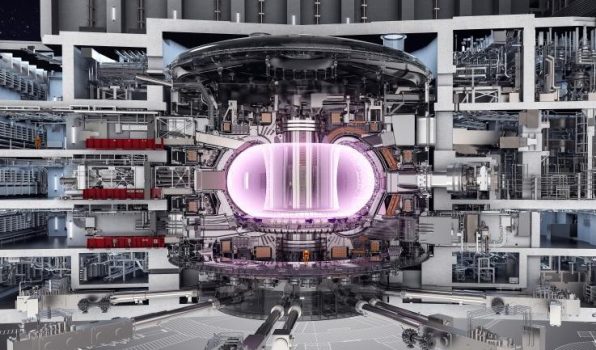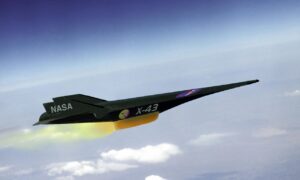 Pin
Pin (Photo credit: EUROfusion / CC BY 4.0)
There’s something deeply emotional about the way we talk about energy. It’s not just electricity or heat—it’s survival, progress, hope. In recent years, there’s been a lot of noise around nuclear fusion. People call it the holy grail of energy. But does nuclear fusion energy have high efficiency? Or is it all hype?
Nuclear Fusion Energy Efficiency is a keyword that hits hard in both scientific circles and public discussions. It’s what makes fusion either a revolution or a waste of time. The idea of creating energy the same way the sun does isn’t just fascinating—it stirs something inside us. It feels futuristic, almost mythical. But what’s the truth behind the tech?
We’ll break down what efficiency really means in the world of fusion, and why the answer isn’t as shiny or simple as it sounds. This isn’t about buzzwords. It’s about digging into what works, what’s broken, and what might actually change the world.
Table of Contents
Defining Efficiency in Real-World Terms
 Pin
Pin Image by ITER
When we talk about efficiency in energy, we aren’t just throwing numbers around. Efficiency is the soul of any energy system. It’s about how much energy you get out compared to what you put in. For nuclear fusion, this is where things get emotional. Because on paper, fusion looks like magic—but real-world numbers have a way of humbling even the brightest ideas.
Fusion works by fusing hydrogen atoms into helium, releasing energy in the process. It’s what powers the sun. That reaction gives off a ton of energy—no carbon, no radioactive waste like fission, and fuel sources that seem almost endless. Sounds perfect, right?
But here’s the kicker: getting the reaction started takes an insane amount of energy. We’re talking ultra-high temperatures, magnetic confinement, and a system so precise it feels like science fiction. So, if you have to burn more power than you get back, is it really efficient?
This question cuts deep. Because if we can’t crack that code, fusion stays locked in the lab forever.
How Fusion Compares to Other Energy Sources
To really understand nuclear fusion energy efficiency, we need to look at how it compares to the systems we already use. Right now, our energy largely comes from fossil fuels, nuclear fission, hydroelectricity, wind, and solar. Each of these has its own efficiency rating—and its own set of consequences.
For example, coal plants convert about 33% of the fuel’s energy into electricity. Natural gas does a bit better, averaging around 60% in combined-cycle plants. Solar panels convert sunlight at roughly 15–22% efficiency. Wind turbines vary depending on conditions, but usually fall between 35–45%.
Nuclear fission—the method used in current nuclear reactors—has a thermal efficiency of about 33–37%, but with major concerns around radioactive waste and meltdown risks.
Fusion, in theory, has the potential to reach efficiencies above 70%, possibly even higher. That’s because the energy density of fusion fuel is massively greater than fossil fuels. A few grams of deuterium and tritium could produce as much energy as tons of coal.
The problem? We still haven’t reached net energy gain in practice.
Detailed Comparison Table: Fusion vs Other Energy Sources
<<< Scroll >>>
| Feature / Factor | Nuclear Fusion | Nuclear Fission | Coal | Natural Gas | Solar | Wind |
|---|---|---|---|---|---|---|
| Efficiency (Electric Output) | Theoretical: 70%+ (Q > 1 not fully reached) | 33–37% | 33–40% | Up to 60% (Combined Cycle) | 15–22% | 35–45% |
| Fuel Availability | Deuterium from seawater, tritium scarce | Uranium, limited and non-renewable | Plentiful but polluting | Abundant but emits CO₂ | Sunlight (renewable) | Wind (renewable) |
| Energy Density | Extremely high (1g fuel = tons of coal) | High energy density | Moderate | High | Low | Low |
| Greenhouse Gas Emissions | None during operation | None during operation, but waste is toxic | Very high | Moderate | None during operation | None during operation |
| Radioactive Waste | Very little, short-lived isotopes | High-level waste lasting thousands of years | None | None | None | None |
| Safety Risks | Low (no meltdown risk) | Meltdown risk, terrorism concern | High (mining + emissions hazards) | Moderate (explosion/fire risks) | Very low | Very low |
| Cost of Energy ($/MWh) | Currently very high (experimental phase) | $100–130 (moderate) | $60–120 (cheap) | $40–80 (affordable) | $30–60 (dropping with tech) | $25–50 (site dependent) |
| Technology Readiness | Experimental, not yet commercial | Commercial and mature | Fully established | Fully established | Mature and growing | Mature and growing |
| Scalability | High potential, future large-scale use | Scalable but with political limitations | High, but harmful | High, but with emissions | Scalable with land use | Scalable with location limits |
| Environmental Footprint | Very low (if fully developed) | Moderate due to mining, waste | Very high | Moderate | Low (panel production impact exists) | Low (manufacturing impact exists) |
| Operational Lifespan | TBD (still being developed) | 40–60 years per plant | 30–50 years | 30–50 years | 20–30 years (panels) | 20–25 years (turbines) |
The Net Energy Gain Problem (Q > 1)
This is where everything gets real. When scientists talk about nuclear fusion energy efficiency, they often focus on a number called “Q.” It’s the ratio of energy output to energy input. A Q value greater than 1 means you’re getting more energy out than you’re putting in. That’s the moment fusion becomes not just possible, but practical.
Right now, we’re not quite there. The best experimental reactors, like the Joint European Torus (JET) and the National Ignition Facility (NIF), have come close, but still fall short of sustained net energy gain. The input energy needed to heat and compress the plasma, control it with magnets or lasers, and keep the system stable still exceeds the energy we get out.
This isn’t just a technical hurdle—it’s the wall standing between fusion as a dream and fusion as a power plant. Researchers are getting closer every year, and recent headlines are full of breakthroughs. But Q > 1 remains a milestone we haven’t fully crossed yet. That matters more than any theory ever could.
Raw Materials – Are They Worth the Effort?
Fusion energy sounds incredibly promising, but materials matter. To evaluate nuclear fusion energy efficiency, we also have to look at the raw fuels required—and how hard they are to get. The most commonly proposed fuel mix for fusion is deuterium and tritium. Both are isotopes of hydrogen, but they have very different sourcing stories.
Deuterium is relatively easy to find. It occurs naturally in seawater, and extracting it is straightforward. Just one gallon of seawater contains enough deuterium to generate massive amounts of energy through fusion. That’s a clear plus.
Tritium, on the other hand, is far more complicated. It’s radioactive, has a short half-life (about 12 years), and doesn’t occur naturally in large amounts. Right now, most tritium is produced in nuclear reactors as a byproduct, which means we still depend on fission processes to get it.
Is that efficient? Not entirely. Until we create a reliable tritium breeding system inside fusion reactors using lithium, the fuel cycle remains incomplete. That raises costs and adds layers of complexity. So, while the fuels sound simple, the reality of sourcing them challenges the overall efficiency picture.
Technological Barriers Holding Fusion Back
Even with abundant raw materials and a solid theoretical foundation, nuclear fusion energy efficiency is still held back by major technological barriers. These aren’t just bugs to be fixed—they’re core challenges that have kept fusion from becoming a commercial reality for decades.
The first challenge is containment. Fusion requires temperatures of over 100 million degrees Celsius, hotter than the sun’s core. No physical material can handle that directly, so scientists use magnetic confinement (like in tokamaks) or inertial confinement (using lasers) to hold the plasma in place. But keeping the plasma stable, preventing it from touching the reactor walls, and controlling it over time is incredibly complex.
Another problem is energy input. The systems needed to create and maintain the fusion environment consume huge amounts of electricity. So even if a reaction generates energy, we might still be spending too much to make it happen.
Until we overcome these hurdles with scalable solutions, the question of efficiency isn’t just technical—it’s emotional. We’re chasing a dream, but dreams need hardware that actually works.
Recent Breakthroughs – Are We Getting Closer?
In the past few years, there’s been a noticeable shift. For decades, nuclear fusion felt like a distant hope—always 30 years away. But today, things are starting to move. Projects like ITER in France, SPARC by MIT and Commonwealth Fusion Systems, and breakthroughs from the National Ignition Facility (NIF) in the U.S. have brought new energy into the conversation.
One major milestone came in December 2022 when NIF achieved “ignition” for a brief moment—meaning the energy output from the fusion reaction exceeded the energy from the lasers hitting the target. That moment mattered not because it solved everything, but because it showed net gain could happen, even if only under special conditions.
Still, this doesn’t mean we’re ready to power cities with fusion. These systems are experimental and incredibly expensive. But they’ve reignited public interest and investment, pushing the field further.
Efficiency is improving, but we’re not done. These wins are emotional because they give hope—but they also remind us how far we still have to go.
Cost vs Efficiency – Is Fusion Economically Viable?
Efficiency isn’t just about energy—it’s also about money. A system might produce clean power, but if the costs are sky-high, it won’t replace fossil fuels or even compete with renewables. That’s where the discussion about nuclear fusion energy efficiency gets complicated. Because so far, fusion has been anything but cheap.
Building experimental reactors like ITER or NIF costs billions. Maintaining them, operating the super-cooled magnets, and handling complex materials adds even more. Right now, fusion energy costs more per megawatt-hour than any existing source.
But it’s not just about today’s numbers. Long-term efficiency includes the ability to scale, sustain, and reduce costs over time. Fusion doesn’t emit CO₂. It doesn’t need endless fuel shipments. Once running, a commercial reactor could deliver near-continuous power with minimal environmental impact. That’s a powerful incentive.
Still, financial efficiency matters just as much as energy efficiency. Governments and private companies are pouring money in, hoping breakthroughs will flip the equation. Until that happens, fusion remains a high-risk, high-reward investment.
Environmental Efficiency – The Silent Advantage
When people ask “Does nuclear fusion energy have high efficiency?”, they often focus on numbers. But there’s another kind of efficiency that’s just as important—environmental efficiency. And this is where fusion quietly shines brighter than most other energy sources.
Fusion produces no greenhouse gases during operation. There’s no burning of fossil fuels, no smoke stacks, and no carbon emissions polluting the air. That alone is a massive environmental win. It doesn’t stop there. Unlike fission, fusion doesn’t create long-lived radioactive waste that needs to be stored for thousands of years.
Even solar and wind, as clean as they are, rely on materials like rare earth metals and face recycling issues. Fusion, if perfected, would need less land, fewer materials, and have far lower ecological impact over its lifetime. That’s real-world, long-term efficiency.
So while technical and economic challenges remain, fusion’s environmental advantage makes it worth chasing. Efficiency isn’t just about numbers—it’s about leaving a world behind that future generations can actually live in.
The Emotional Weight Behind the Efficiency Debatex
People don’t just want nuclear fusion to work—they need it to. In a world that feels like it’s running out of time, nuclear fusion energy efficiency holds more than just scientific weight. It carries emotional gravity. It’s the promise of clean, abundant power without the scars of climate change, oil wars, or toxic waste. That promise speaks to a future that feels safe, stable, and fair.
But hope alone won’t power cities. The truth is, fusion is not yet efficient enough to be our solution today. The numbers haven’t lined up. The systems are still too fragile, too costly. Yet every breakthrough, every improvement in Q factor, every new startup pushing boundaries—it all matters.
We’re not chasing a perfect machine. We’re chasing the chance to change everything. And that kind of chase comes with frustration, joy, and the weight of global expectations. So, is nuclear fusion energy efficient? Not yet. But we’re closer than ever—and that makes the question worth asking again and again.
FAQs
Yes, in theory. Nuclear fusion has the potential to be far more efficient than fossil fuels or even nuclear fission. A small amount of fusion fuel can produce massive amounts of energy. However, we haven’t yet built a reactor that consistently gives more energy than it uses, which is why it’s still in the experimental phase.
Fusion reactions release energy by combining light atomic nuclei, typically isotopes of hydrogen. This process releases energy based on Einstein’s E=mc², and just a few grams of fuel can produce energy equivalent to tons of coal. Plus, it doesn’t release greenhouse gases or toxic long-term waste, which boosts its overall efficiency.
The main barrier is net energy gain. Right now, it takes more energy to trigger and control a fusion reaction than the energy it produces. The technology to confine and sustain fusion plasma at extreme temperatures is still being perfected.
Deuterium is abundant and can be extracted from seawater. But tritium, the other common fuel, is rare and must be bred inside reactors or produced using nuclear fission. This challenge affects the fuel cycle efficiency and overall cost.
Experts believe that commercial fusion plants could emerge by the 2040s, thanks to recent breakthroughs. It’s not guaranteed, but the progress is real. When it arrives, fusion could change the world—providing clean, safe, and powerful energy for generations.





























